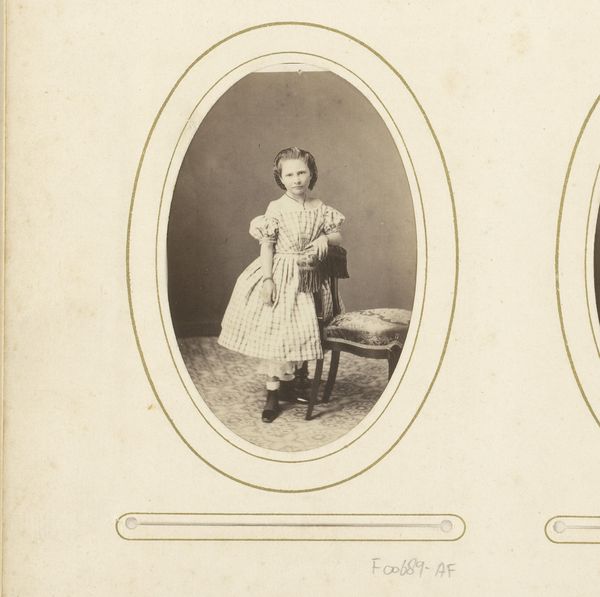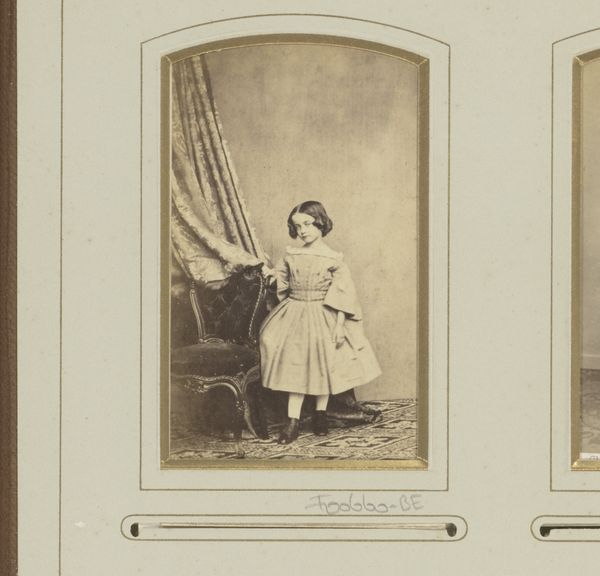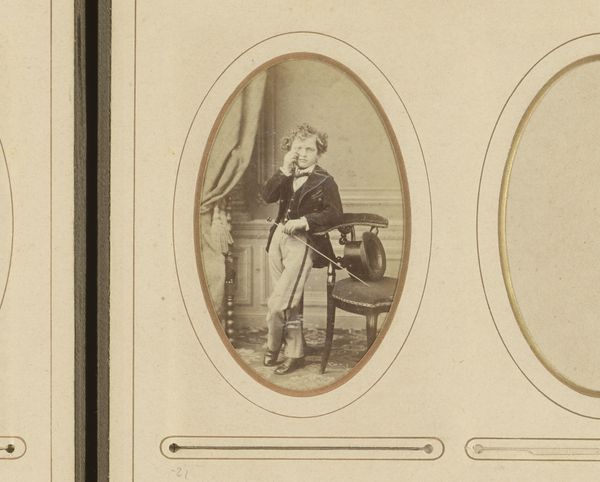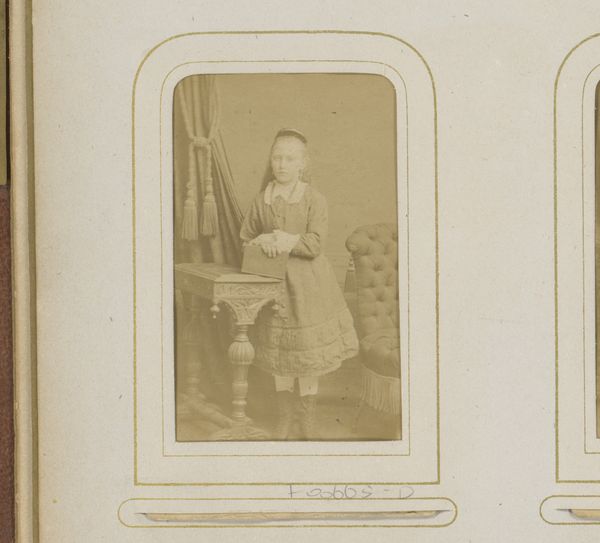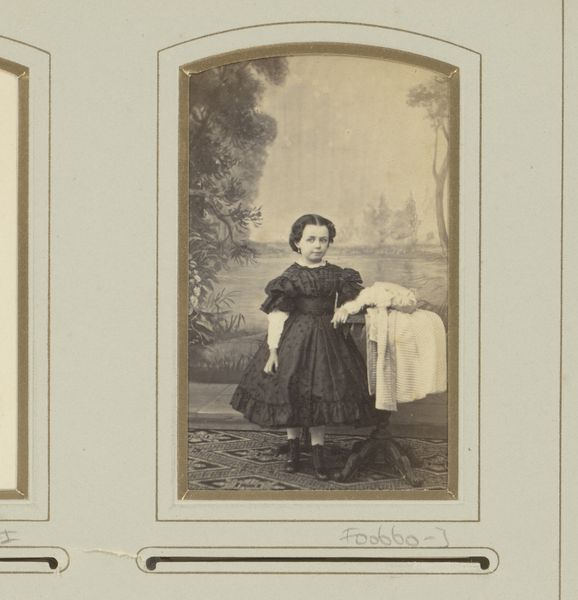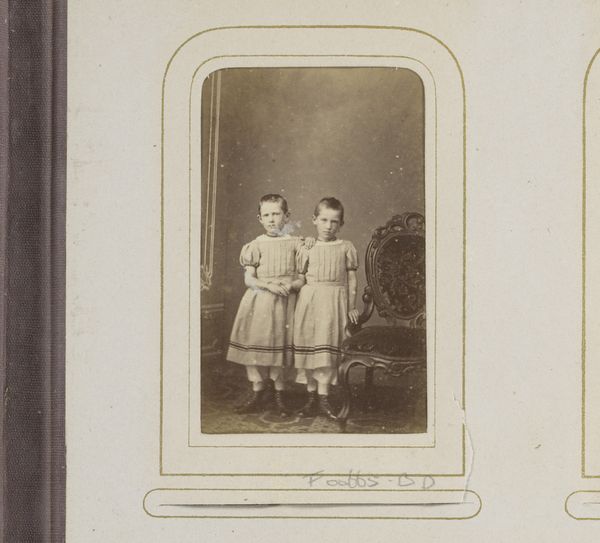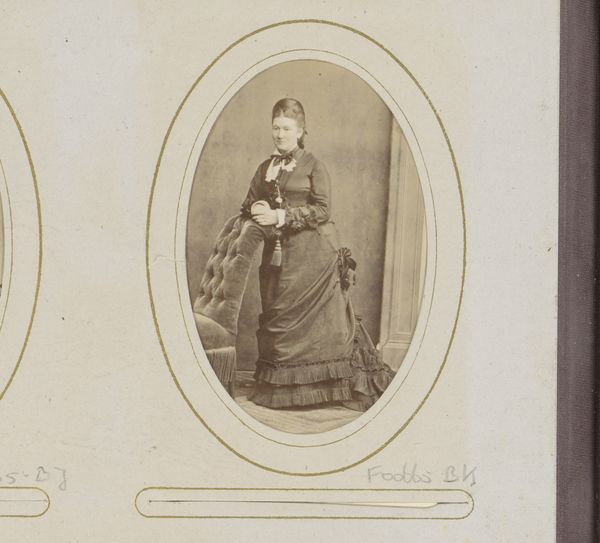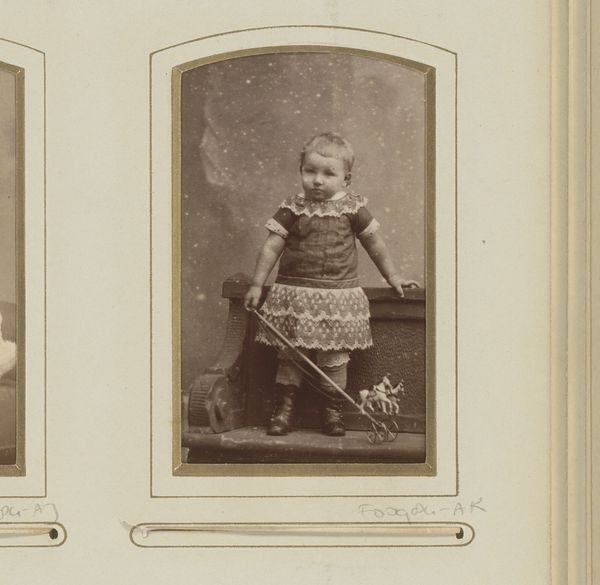
photography, albumen-print
#
portrait
#
photography
#
genre-painting
#
albumen-print
Dimensions: height 84 mm, width 54 mm
Copyright: Rijks Museum: Open Domain
Curator: This albumen print, "Portret van een meisje met pop," probably taken somewhere between 1865 and 1895 by Thomas Martin Staas, is really quite striking. The girl’s formal pose contrasts rather sharply with her youthful attributes, which gives a touching, vulnerable quality. What's your impression? Editor: Aww, there's an undeniable sadness to it, right? The sepia tones just amplify the feeling that you’re looking back at something long gone, maybe even something never fully realized. It is like, a tiny, perfectly formed melancholy encapsulated in a little frame. Curator: Yes, melancholy, that's a great way to put it. And consider the social context: photography was becoming more accessible, but it was still an event. Formal portraits were a way for families to mark time and display social standing. Here, we have this child carefully positioned, clinging to her doll, likely for comfort but maybe also to showcase belonging and status. Editor: The chair she is holding on to… It is almost as ornate as she is prim. What a prop! She must be absolutely roasting under all those layers of heavy garments and is desperate for it all to be over. I see such reluctant submission in her expression. But there is such a starkness about the photo – like the setting, lighting. So bare. Is that typical? Curator: Absolutely. The formal constraints of the era heavily influenced the photographic style. Studios carefully controlled the lighting to achieve a certain clarity and detail, showcasing clothing and accessories. Remember that posing also required long exposure times which further lends itself to these frozen gestures and restrained emotions. Editor: Thinking of that exposure time… the poor kid having to stand still, no wonder she looks mournful! Perhaps Staas tried to capture her spirit? To inject life into the frozen format of studio portraiture? Does that work in the modern day I wonder… or are we doomed to always view historical portraits through our modern gaze and interpret that ‘sternness’ and ‘restraint’ with the lens of melancholy. Curator: That's a profound question. Maybe it’s in the dialogue itself, our differing perceptions bouncing off each other that give us more than one perspective. Her future or a picture of how things were is open for interpretation by many eyes and voices. Editor: Indeed, so whether capturing an accurate historical document or something sad forever immortalized and interpreted is… Well, it is still gorgeous.
Comments
No comments
Be the first to comment and join the conversation on the ultimate creative platform.
